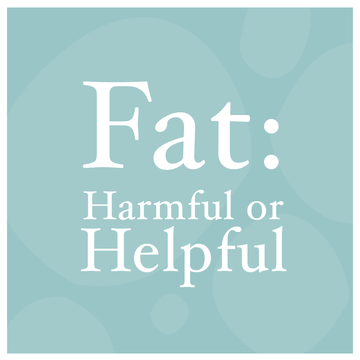
Sometimes when people talk about fat, it is automatically deemed the villain. However, recent studies are saying this is not the case. Trendy diets like the Ketogenic diet have everyone talking about “healthy fat”. In this blog post, I am going to break down exactly what healthy fat is and help you to decide whether it is worth all the hype.
Why is Fat an Essential Nutrient
Many of the functions in our bodies rely on fats to keep things running smoothly. Our only option is to get fatty acids from our diet because our bodies cannot build them from other components. These essential fatty acids deliver fat-soluble vitamins, provide energy and keep our skin soft.
Why Does Fat Get a Bad Name?
The notion that eating fat will make us fat has been around so long that you can still hear it in the back of your mind, right? Think about this instead. While I will be the first to admit not all fats are created equal; the problem isn’t just about the type of fat our population consumes, but also the amount. Health professionals estimate the average intake of fat is 20 times greater than is required for optimal function.
What is a Healthy Fat and How Do I Add It to My Diet?
When we look at types of fats, there are two major groups; saturated and unsaturated. Within each of these categories, there are several different kinds. Most of the good guys fall under the unsaturated category. Both polyunsaturated and monounsaturated fatty acids have numerous health benefits. For example, omega-3 fatty acids are part of the polyunsaturated family and have the same heart-healthy and cholesterol-lowering benefits of their fellow unsaturated fatty acids.
Some great sources of healthy fats include avocados, olive oil, dark chocolate, nuts and fatty fish. Some of my favourite ways to incorporate healthy fat into my diet is whole-wheat toast with an egg and avocado on top plus a sprinkle of cheddar cheese. Baked salmon drizzled with garlic-infused olive oil, plenty of green vegetables and brown rice is a delicious choice too.
Altering Your Macros to Reach Your Goals
I would recommend changing your macro ratio until you find the grouping that fuels your body in the most efficient way possible. I can’t stress enough that listening to your body is one of the most valuable tools when shifting your eating patterns. The following guidelines should help you know which direction you’re headed. The typical macro distribution for fat is 10 – 35% of all energy. Avoiding the lower end of that range and keeping intake at about 25 – 35% has shown benefits for both weight loss and muscle gain.
The Final Verdict Is…
Choose foods that are minimally processed to avoid the “bad fats” like trans fats. Go for foods with polyunsaturated and monounsaturated fats to maximize their heart-healthy and satisfying properties. Be mindful of your intake and adjust your macros to meet your goals. When you pay attention to the macronutrient ratio you eat, it is easier to make small tweaks until you find the combination that makes you feel amazing.
If you haven’t already, read all about the macronutrient family in our previous blog post. Stay tuned, next we dig into the benefits and myths of protein!
Shelby Lang-Perry is an AURA Team member with a passion for health and wellness. She is armed with a B.Sc. in Nutrition and Food Science to get you the real story on all your nutrition questions.






